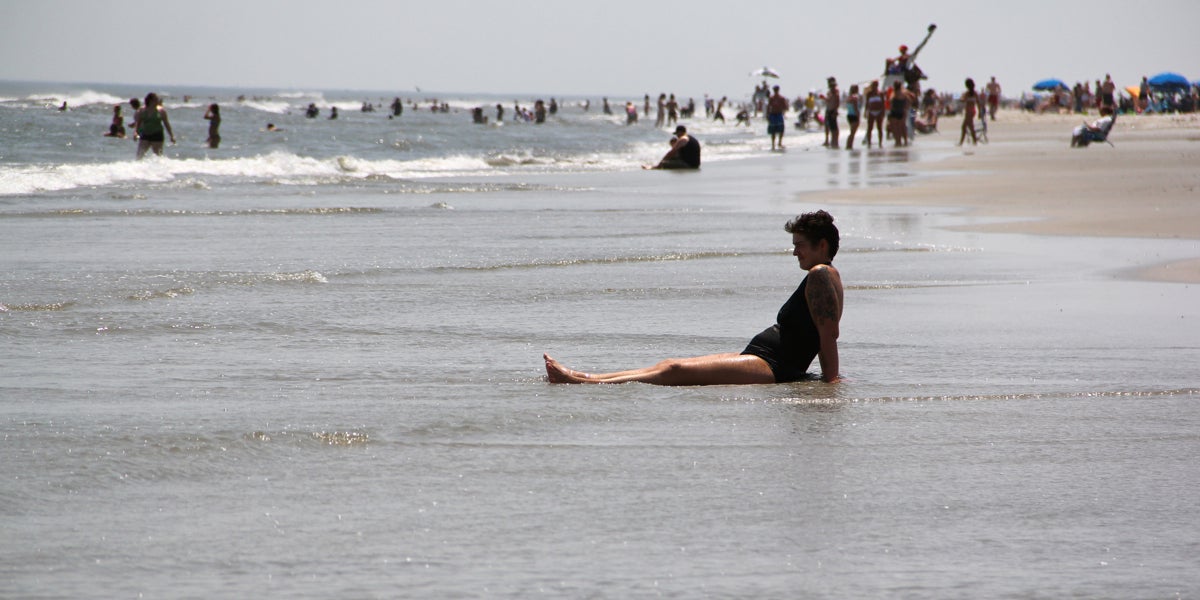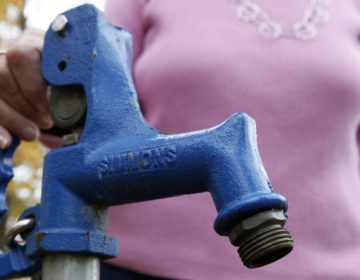Science explains changes in water temperature from beach to beach
Listen 6:28
(Emma Lee/for The Pulse)
This story is from The Pulse, a weekly health and science podcast.
Subscribe on Apple Podcasts, Spotify or wherever you get your podcasts.
Ocean water surface temperatures vary greatly along the Eastern Seaboard. An oceanographer explains why it’s so unpredictable.
Have you ever wondered why the water at one beach feels significantly colder than the water at another beach just a couple dozen miles away? Josh Kohut, a physical oceanographer at Rutgers University, who studies the movement, temperature and physical parameters of our local and global oceans, joined us this week to explain the science behind this common temperature variability.
Below is the transcription of his interview with Pulse host Maiken Scott.
What are the main forces that shape ocean temperatures? In our area off the coast of the Mid-Atlantic, from North Carolina up towards Cape Cod, most of it is governed by wind and solar radiation. So we go through the summer/winter cycle, and that has a big impact on the ocean temperatures.
So, obviously, the sun heats the water. Then what role does wind play? One of the things that’s very unique about the ocean off our coast is that it goes through — at least on the surface — it goes through the biggest temperature range from summer to winter of anywhere on the planet. So we have large changes where, in the summertime, we could have temperatures in the 80s, and in the wintertime, those temperatures could be in the upper 30s to 40s. And so that’s a very big swing. That’s driven mostly by how much sun is beating down on the ocean to warm it up. Then the wind acts as a mixer, so it’s almost like a wooden spoon when you’re mixing something for a recipe in the kitchen. When the wind pipes up, it stirs the ocean, and it moves temperatures that are either very cold near the bottom up to the surface, or warm temperatures, it’ll mix them down. The combination of how much sunlight we have and what the winds are doing plays a big role in the temperatures we might feel when we’re at the beach.
[What’s the perfect temperature? NewsWorks went to the beach to find out.]
When I go online and check out what the ocean temperature is in Cape May or Atlantic City, where is that information coming from, and how is it measured? Most of that information is coming from […] satellites in space, which are giving maps of temperatures. We work with an ocean observing system that puts out maps of temperatures, and these are measured from satellites that are orbiting around the planet. There’s about eight different times a day when we get a snapshot and what those satellites are measuring is the amount of infrared energy that’s coming out from the ocean.
So, nobody is sticking a little temperature gauge into the water? Some are. That’s the other way that we measure. There are a few ways we can do that. One is with buoys in the ocean. NOAA, the National Oceanic and Atmospheric Administration, they run a series of buoys that are offshore that report back real-time temperatures of the surface ocean, wind conditions, meteorological parameters, all different types of things get sent back.
In addition to that, there are robots that we put in the water, called gliders, and they are autonomous, meaning they’re on their own, they’re not tethered to anything. They patrol the waters for about 30 days at a time, measuring things like temperature, salinity of the water, and they send that information back to us every three to four hours.
Subscribe to The Pulse
When I check the temperatures for some beaches near us — for example, Atlantic City and Cape May — they are about 40 miles apart, but the ocean temperatures … there can be a good six-degree difference. Why is that? The one caveat to what we’ve been talking about in terms of the range of temperature that we see from summer to winter is that it only affects the surface of the ocean. It’s just that part of the ocean that the sun’s energy penetrates through. What happens below that, which is typically around 50-60 feet deep and deeper, is that cold winter weather stays there, and it stays cold. That we call the “cold pool.” It’s actually a pool of cold water that’s remaining from the winter prior and it’s sitting there and reacting to the local wind. There’s a process called upwelling where the winds can actually take that cold water that’s sitting down deep and move them to the beach. You could have a situation where one beach is getting the influence of this cold water and another beach is not.
So it’s almost like it depends on who your bartender is in terms of how the mix is going to shake up on your beach? That’s right. It has to do with the wind. So when upwelling happens, it’s when you have these really nice summertime breezes from the South, Southwest. And when you have wind coming from the South, Southwest, along our coast, because we’re on a rotating planet, it actually pushes that warm water that we’ve been talking about in the summer, offshore, away from the beach. As that water moves away from the beach, what replaces it is that really cold water from the cold pool.
Are there beaches where the water is reliably warmer or does it depend on that day and how the breeze is coming in and out? It depends a lot on the combination of the wind, the orientation of the coast and what’s happening below the sea in terms of the sea floor, where there are subtle ridges and different structures on the sea floor that affects how that cold water moves toward the beach when those winds spin up. The variability or the difference that you see from one beach to the next is a combination of all these different things.
If I’m at the beach and I go into the water, is the measurement taken anywhere near where I would swim? Most of the satellite measurements will be taken from further out — maybe a mile or two from the beach. There are some new sensors that allow us to get a little bit closer, or even some of the back bays, so those measurements aren’t right where you’re swimming, but with those observations just a little bit further away, we can get a sense of where the cold water is and where it isn’t.
But where I stick my toes into the water is probably going to be a lot warmer than what I found online because the water is so shallow there. Well, it depends, because if the wind is blowing strong enough and for a long enough time, that cold water is coming in faster than it could be warmed by the sun. This is a common process that happens. It just has to do with the fact that we have really warm water over cold water offshore, and when the winds blow just right, that cold water that’s sitting down deep comes back, and we get a little taste of winter in the middle of July.
As you track ocean temperatures over time, are you seeing a change? The changes that I’ve seen personally in my research is looking more at that cold pool. That massive water that we see near the sea floor. What we’re seeing over time is that that cold pool is warming a bit, and it’s also freshening a bit, and so we see that trend that’s consistent with what other data sets have shown in other parts of the world as well.
When you go to the beach, can you just enjoy it, or are you always thinking about ocean temperatures and how we could better measure them? Oh, both. I got into this line of work because I love the beach so much. I’m very excited to get out there whether it’s for work or fun. There’s always something to learn when you’re out at the beach so I enjoy it for both reasons.
WHYY is your source for fact-based, in-depth journalism and information. As a nonprofit organization, we rely on financial support from readers like you. Please give today.






